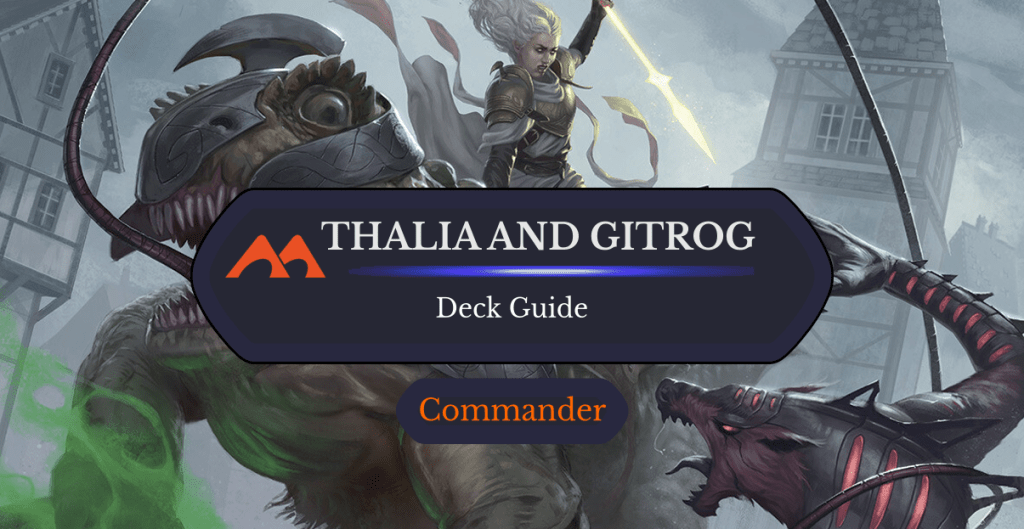
Thalia and The Gitrog Monster (promo) | Illustration by PINDURSKI
Thanks to March of the Machine, we now have a lot of interesting team-up commanders to build decks around. These new legendary creature mashups are almost like turning existing legends into partner commanders, but with the bonus that their effects are all on one card. All the team-up cards seem fun, but one of the first ones previewed stuck out as particularly interesting to build a deck around: Thalia and The Gitrog Monster.
Taking elements from both a previous version of Thalia and the original The Gitrog Monster, you get an interesting mix of abilities. Like other legendary team-ups, you also get access to all the colors of mana available from both of the characters pictured. What you’re left with is a commander with a bit of land support and some control aspects. For this build, I leaned more heavily towards lands and landfall abilities, but I think Thalia and The Gitrog Monster lends itself to several different styles of decks based on the card’s static abilities.
If you’re looking for a landfall build with an interesting commander, this deck is for you. This deck also has a few nasty tricks up its sleeve, so you may need to have a rule 0 conversation with your playgroup before testing it out.
Let’s look at the build and the strategy for this Thalia and The Gitrog Monster deck!
The Deck

The Gitrog Monster | Illustration by Jason Kang
Commander (1)
Planeswalkers (3)
Nissa of Shadowed Boughs
Nissa, Vital Force
Wrenn and Realmbreaker
Creatures (29)
The Gitrog Monster
Ramunap Excavator
Azusa, Lost but Seeking
Avenger of Zendikar
Titania, Protector of Argoth
Titania, Nature's Force
Titania, Voice of Gaea
Tireless Provisioner
Tireless Tracker
Lotus Cobra
Ashaya, Soul of the Wild
Emeria Shepherd
Scute Swarm
Emeria Angel
Rampaging Baloths
Courser of Kruphix
Ob Nixilis, the Fallen
Greensleeves, Maro-Sorcerer
Maja, Bretagard Protector
Mondrak, Glory Dominus
Grazing Gladehart
Dryad Arbor
Drana and Linvala
Braids, Arisen Nightmare
Elvish Reclaimer
Collector Ouphe
Elesh Norn, Mother of Machines
Dryad of the Ilysian Grove
Rhys the Redeemed
Instants (10)
Crop Rotation
Constant Mists
Krosan Grip
Despark
Heroic Intervention
Anguished Unmaking
Swords to Plowshares
Return of the Wildspeaker
Path to Exile
Teferi's Protection
Sorceries (8)
Scapeshift
Cultivate
Nature's Lore
Rampant Growth
Damn
Armageddon
Splendid Reclamation
Do or Die
Enchantments (10)
Exploration
Felidar Retreat
Khalni Heart Expedition
Retreat to Emeria
Curse of the Restless Dead
Primeval Bounty
Doubling Season
Anointed Procession
Parallel Lives
Sylvan Library
Artifacts (2)
Crucible of Worlds
Conduit of Worlds
Lands (37)
Argoth, Sanctum of Nature
Field of the Dead
Indatha Triome
Overgrown Tomb
Canopy Vista
Temple Garden
Murmuring Bosk
Godless Shrine
Forest x8
Plains x5
Swamp x4
Command Tower
Reliquary Tower
Windswept Heath
Marsh Flats
Strip Mine
Verdant Catacombs
Myriad Landscape
Boseiju, Who Endures
Urza's Saga
Ghost Quarter
Dark Depths
Thespian's Stage
For this deck, the first thing I wanted to add was creatures with good landfall abilities. I prioritized the ones who generate tokens to have some fodder for Thalia and The Gitrog Monster’s attack trigger rather than my lands. Of course, this deck also has a good number of ways to get lands out of the graveyard, so it isn’t the worst thing if you have to sacrifice them instead.
I also included cards like Titania, Protector of Argoth with abilities that trigger when lands are put into the graveyard. You’ll be getting value from being able to play extra lands and from the times you have to sacrifice them. This deck also includes 38 lands, accounting for Dryad Arbor, which is slightly higher than I’d normally put in a Commander deck. It’s good to ensure you’re consistently hitting land drops and getting the most out of any landfall abilities.
The Commander
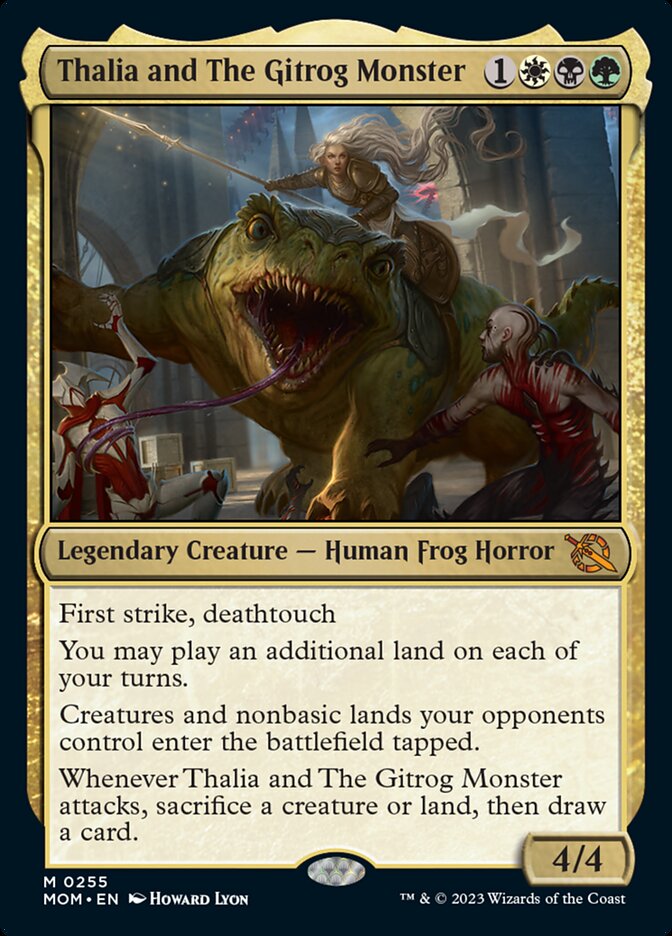
Thalia and The Gitrog Monster does a great job combining traits from both legendary creatures’ other cards. Taking inspiration from The Gitrog Monster, this mashup commander has several abilities that care about lands. From Thalia’s side, you get her tap-down ability from Thalia, Heretic Cathar. As a bonus, you get both deathtouch and first strike, which together make a very lethal combo. Thalia and The Gitrog Monster is quite an intimidating attacker or blocker.
Landfall Abilities
One of the most common landfall abilities in this deck is token generators like Emeria Angel or Rampaging Baloths. Scute Swarm is a particularly powerful one that can get hard for your opponents to deal with if they don’t have a board wipe handy.
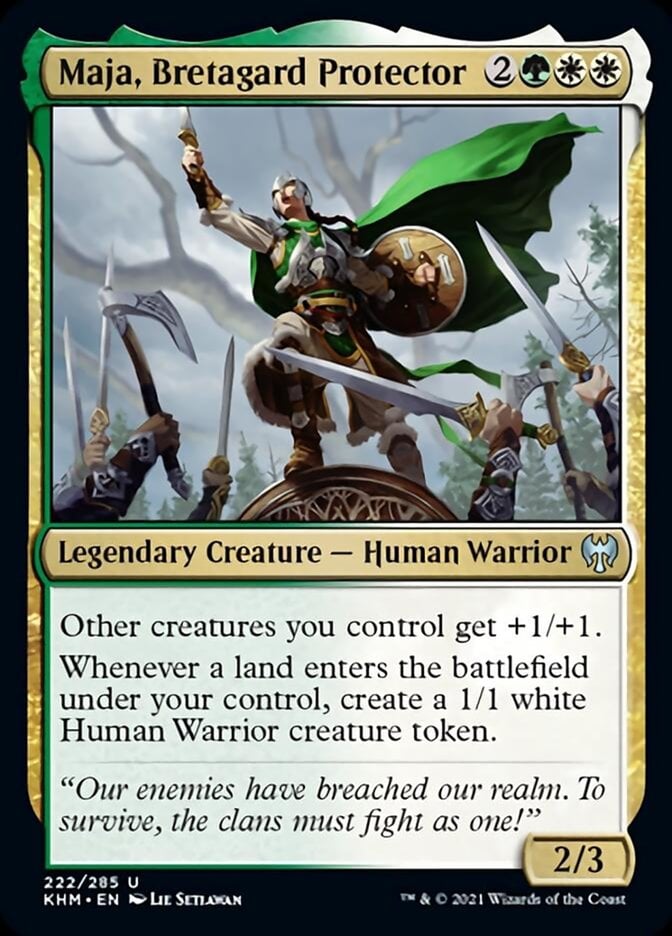
Another great token generator and interesting commander in its own right is Maja, Bretagard Protector. This card won’t just make you a good number of token creatures, it’ll also buff them up a bit.
Outside of creature tokens, you also have cards like Tireless Provisioner and Tireless Tracker to make helpful artifact tokens like treasure or clues.
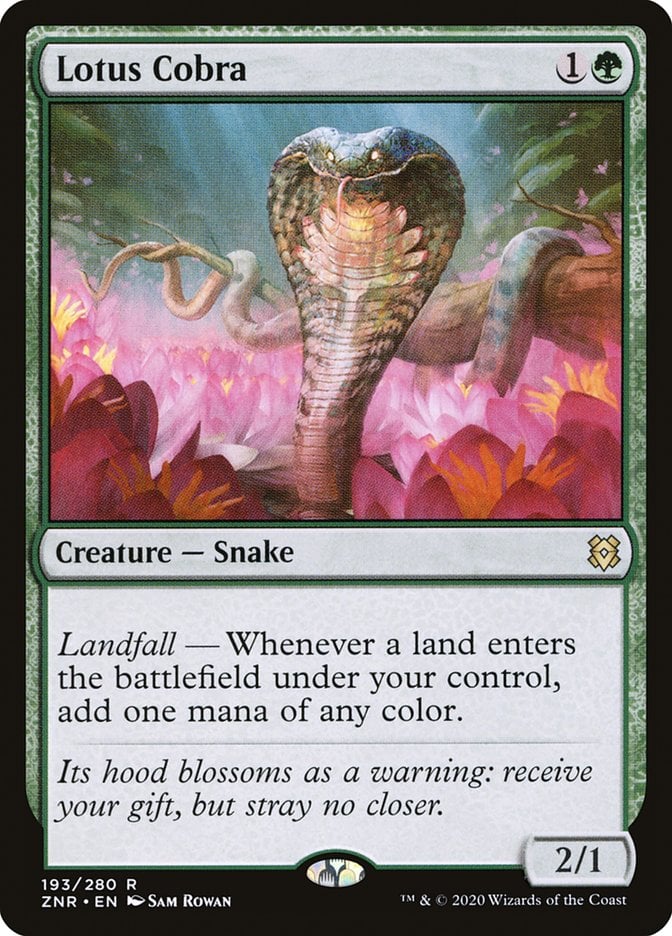
Lotus Cobra can be a great way to speed up your game a bit. Even when you’re playing a tap land, you’re still getting access to some mana that turn. You’re also getting two mana out of any lands that enter untapped the first time you play them.
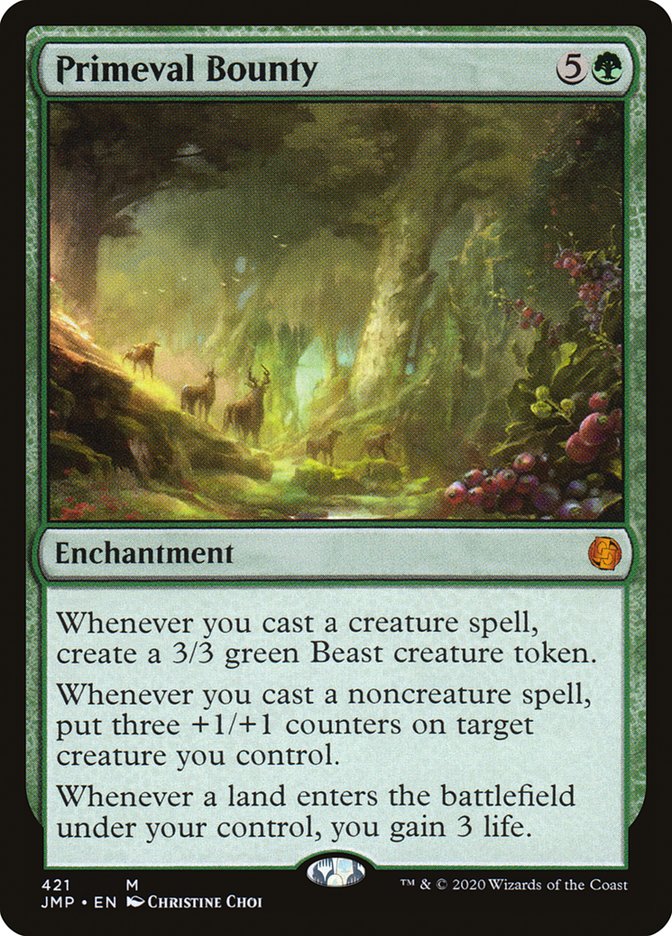
Though it doesn’t have the landfall keyword, Primeval Bounty gains you a good amount of life from each land you play. In addition, you get more value out of any other kind of spell you cast while it’s on the field.
Token Doublers
With token generation being a big part of what this deck does, you benefit greatly from cards that can double the number of tokens you make.
Parallel Lives and Anointed Procession are your standard token doublers, while Doubling Season has the added benefit of also doubling up any counters you put on your permanents.
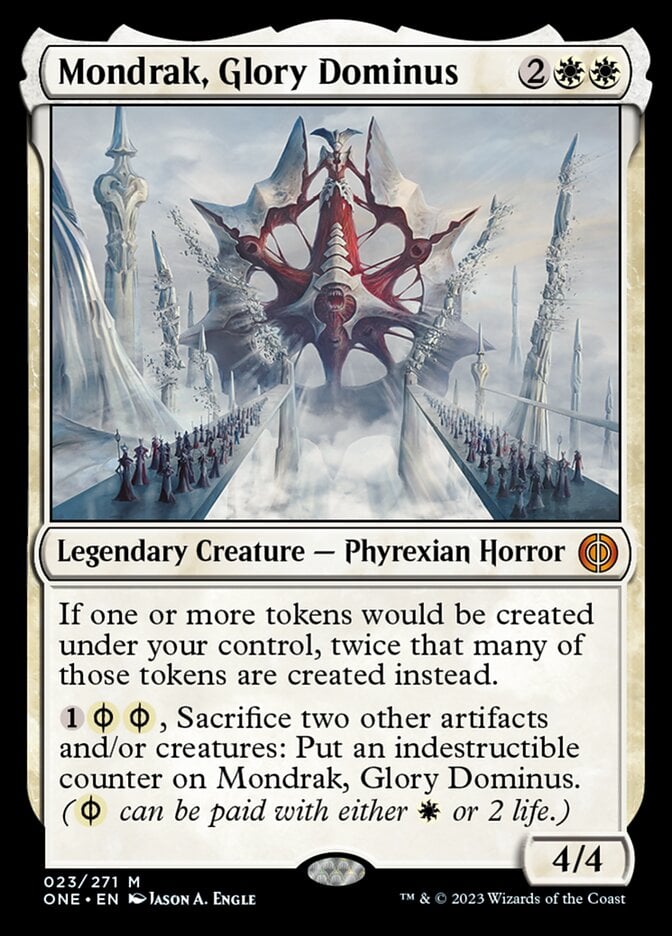
Mondrak, Glory Dominus is the latest token doubler and an especially good one at that. It acts the same way as Anointed Procession, but it can also make itself indestructible (read: harder for your opponents to remove). With so many token creatures in this deck, it shouldn’t be hard to find something to sacrifice to activate Mondrak’s ability.
Extra Lands
While Thalia and The Gitrog Monster allows you to drop extra lands, it’s also nice to have extra ways to get this ability.
Exploration and Dryad of the Ilysian Grove are nice and cheap, allowing you to start dropping several lands before you even get your commander.
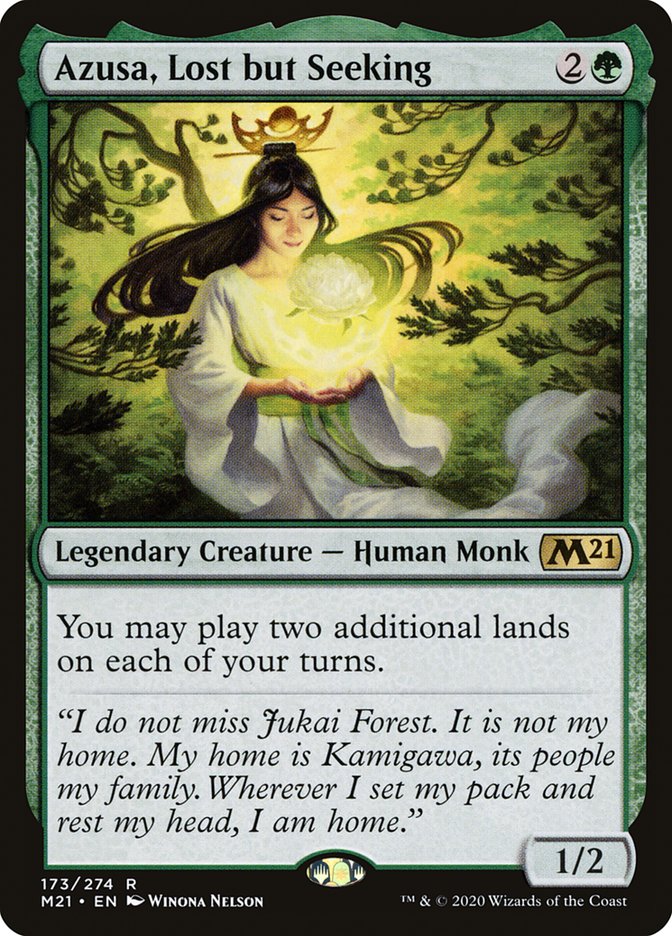
Azusa, Lost but Seeking is one of the best ways to get extra lands because it allows you to play three total each turn. If you have three lands in your hand the turn you play it, you get access to the same amount of mana it costs to play.
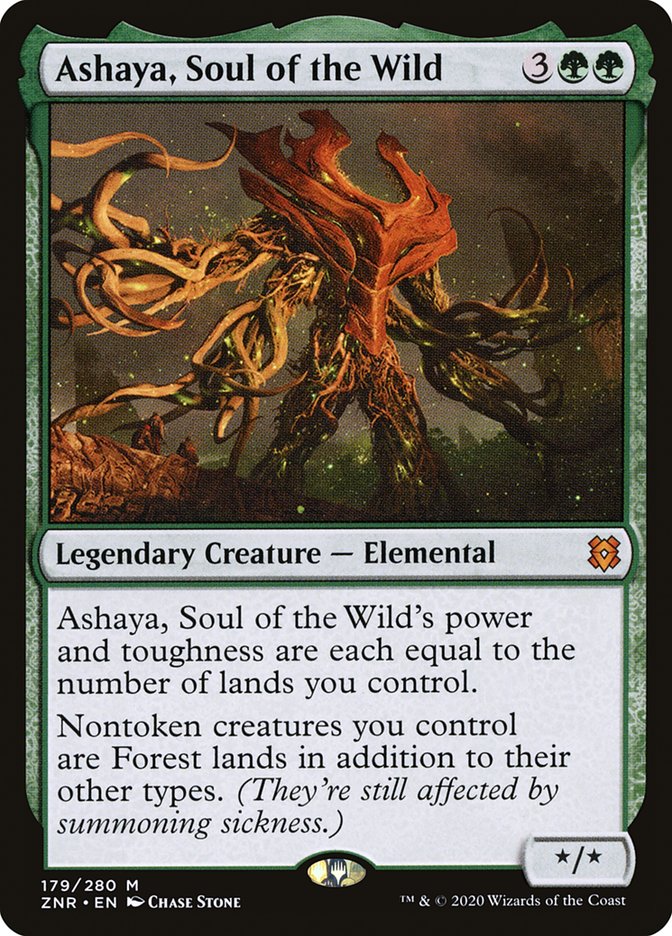
While Ashaya, Soul of the Wild doesn’t technically let you drop extra lands on your turn, it does give you another way to activate landfall abilities. Any time a non-token creature enters the battlefield under your control, you also get your landfall triggers as though you played a land.
Land Sacrifice and Recursion
Landfall abilities are great, but they have a natural downside; if you run out of lands, they stop being useful. To counteract this, I decided to include several ways to sacrifice your own lands for a benefit and ways to then play them from your graveyard. This creates a beneficial cycle that hopefully keeps your landfall abilities from drying up.
Crucible of Worlds and Ramunap Excavator allow you to play lands directly from your graveyard. Conduit of Worlds does the same and can also allow you to cast a single spell from your graveyard at no additional mana cost.
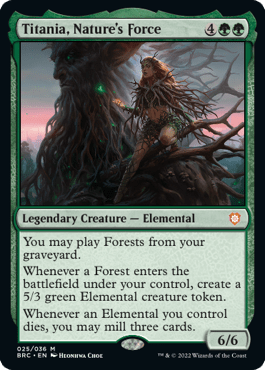
Though Titania, Nature's Force can only get forests out of your graveyard, a good number of the lands in this deck are forests. It’s unlikely for you find yourself in a scenario where you have none to sacrifice and then recur.
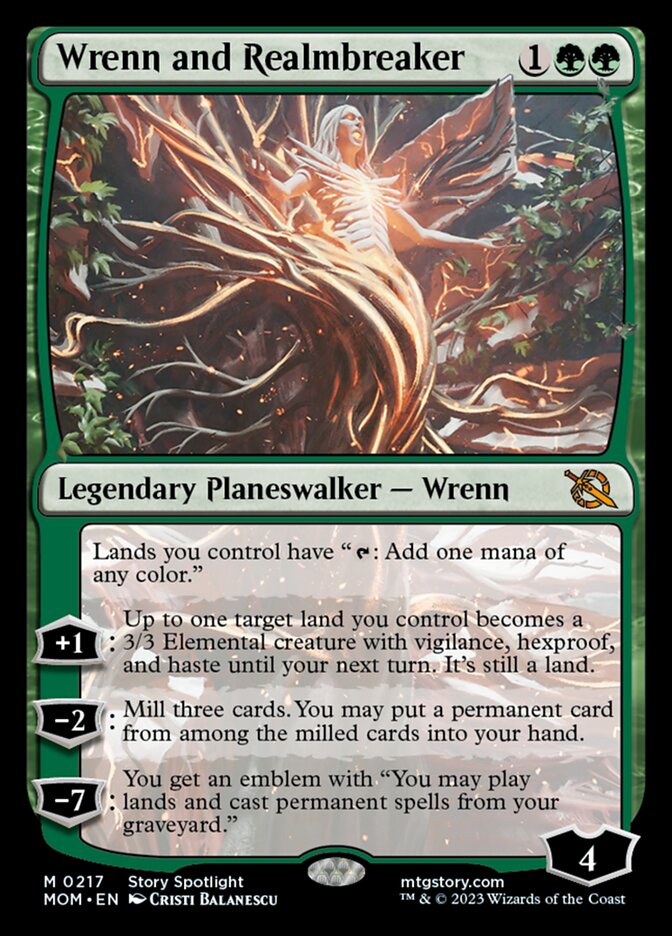
Wrenn and Realmbreaker’s ultimate ability makes it possible to play lands from your graveyard, and since it’s an emblem you can reliably do so for the rest of the game. You can also use its -2 ability to try to hit a land off the top of your deck that you can then put into your hand. If you have Sylvan Library, you can check to improve the chance that you hit a land before activating this ability.
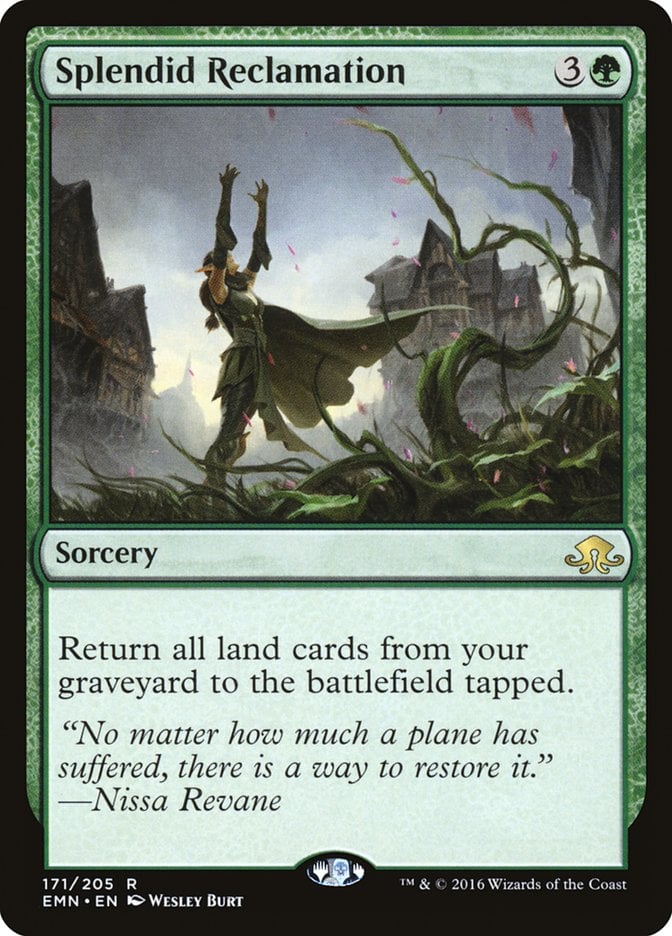
Splendid Reclamation can get all the lands in your graveyard back to the battlefield, which can also give you quite a few landfall triggers if you’ve got a lot in there.
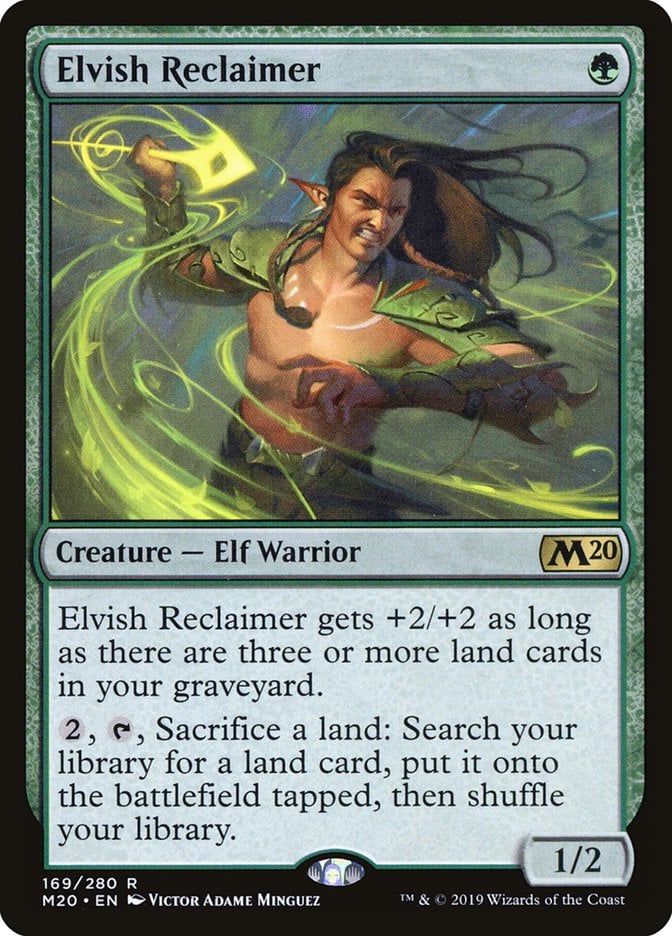
When it comes to sacrificing lands, you also have some ways to do so which are beneficial to you. Elvish Reclaimer lets you find any land card in your library, which can help with mana fixing or with setting up land-based plays like combining Thespian's Stage with Dark Depths.
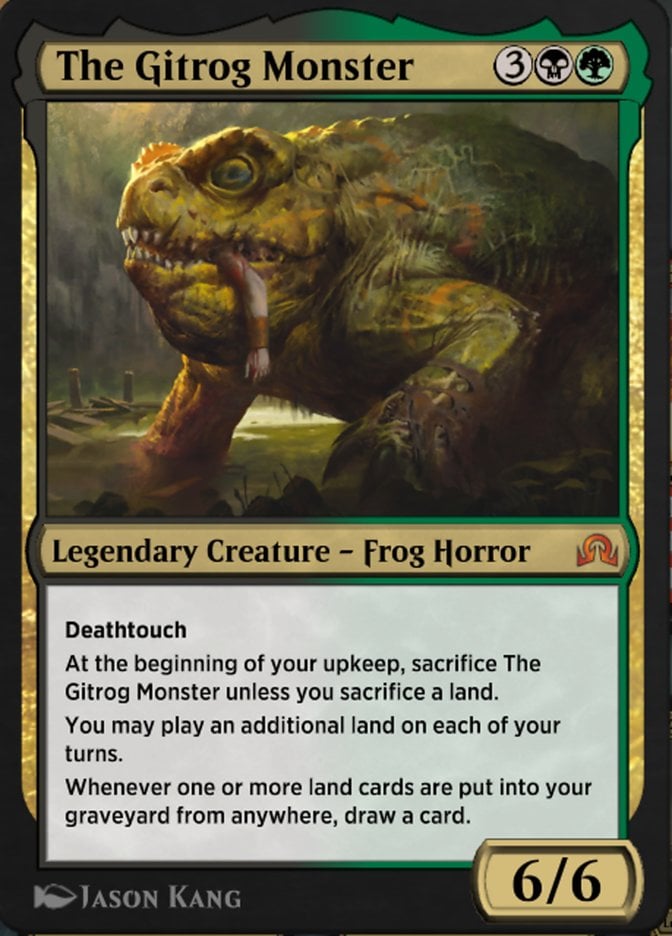
The Gitrog Monster forces you to sacrifice a land each upkeep. If you have consistent land recursion in place, you always have a land to play each turn. You also get some card draw from this card, and you can drop an additional land while it’s out.

Scapeshift can be a very impactful card in a landfall deck because you can get a ton of triggers by cycling out your lands for all new ones. This also lets you grab any land cards you want, so you can find utility lands like Field of the Dead which synergize well with its effect. This also adds a good number of lands to your graveyard which you can recur later for even more landfall triggers.
Removal
Few decks can be fully successful without some form of removal or interaction. For this deck, I stuck mostly with targeted removal because you want to go wide with your board.
Swords to Plowshares, Anguished Unmaking, and Despark are all good ways to remove permanents that also get around indestructible.

Damn is a good bit of targeted removal, because it has the option of being a board wipe in the off chance that’s better for your game. If you’re behind on the board and just need to slow things down a bit, you still can.
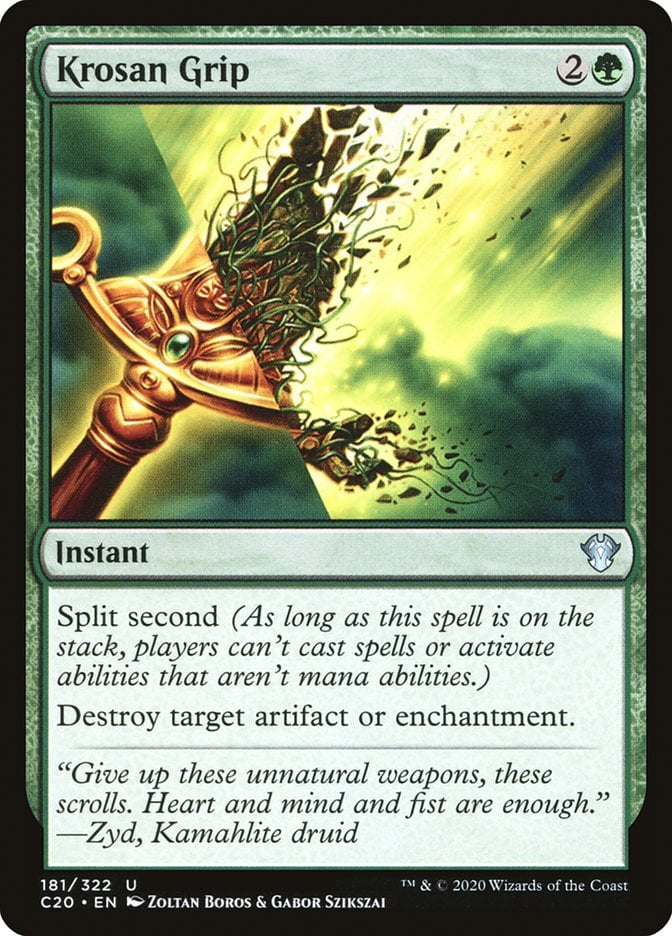
Krosan Grip is one of the best unnatural removal cards in the game thanks to its split second ability.
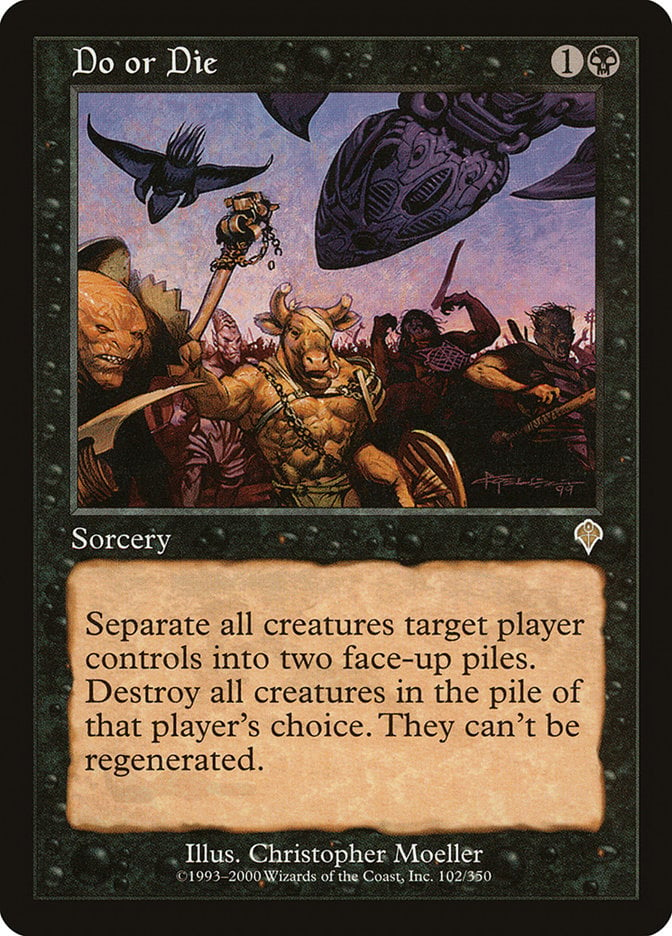
Do or Die helps solve your board wipe problem by still allowing you to take out multiple creatures. While your opponent gets to choose which creatures get destroyed, this can still do a lot of damage when you split up their best threats.

Since you’re running a good amount of land recursion, Armageddon won’t impact you nearly as much as it will your opponents. Still, it’s important you play this when you have a good board state, otherwise you’re just slowing down the game at no real benefit to yourself.
Protection and Control
Apart from just removal, your other main forms of interaction in this deck come in the form of protecting yourself and slowing down your opponents.
Heroic Intervention keeps your permanents safe, and Constant Mists can keep you from taking damage.
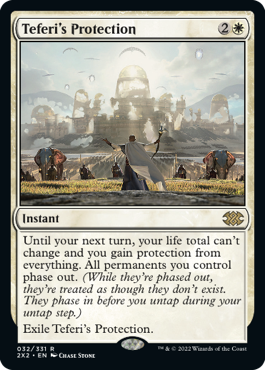
Teferi's Protection is one of the most comprehensive ways to keep yourself safe for a trip around the table, but it’s important you play it after you’ve done everything else you want to since you’re not going to be able to meaningfully affect the game until you phase back in.
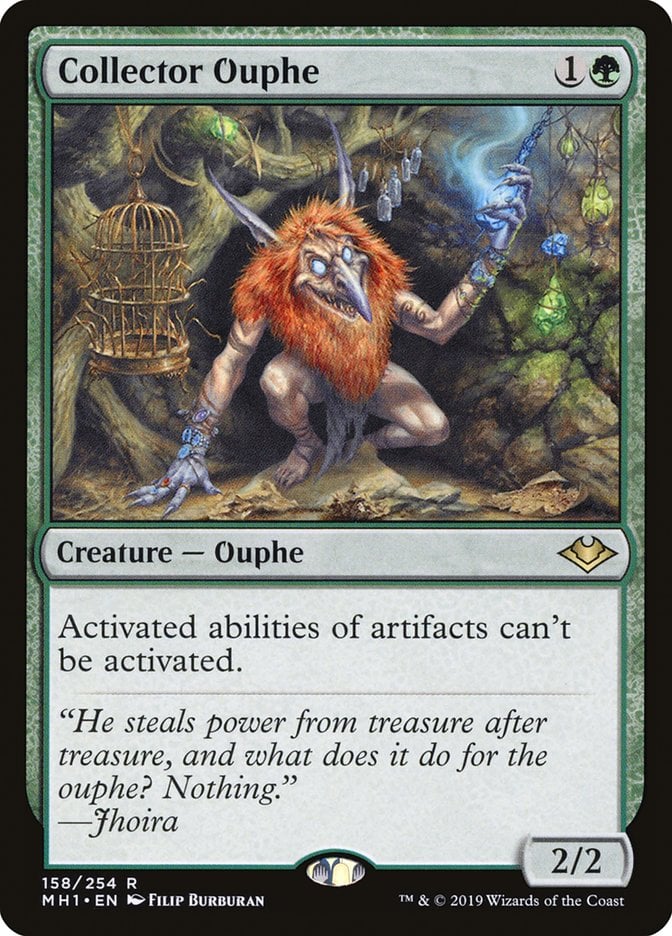
Because this deck only runs one artifact with an activated ability, Collector Ouphe is a nice inclusion. It can be a serious detriment to your opponents while it won’t really affect you all that much.
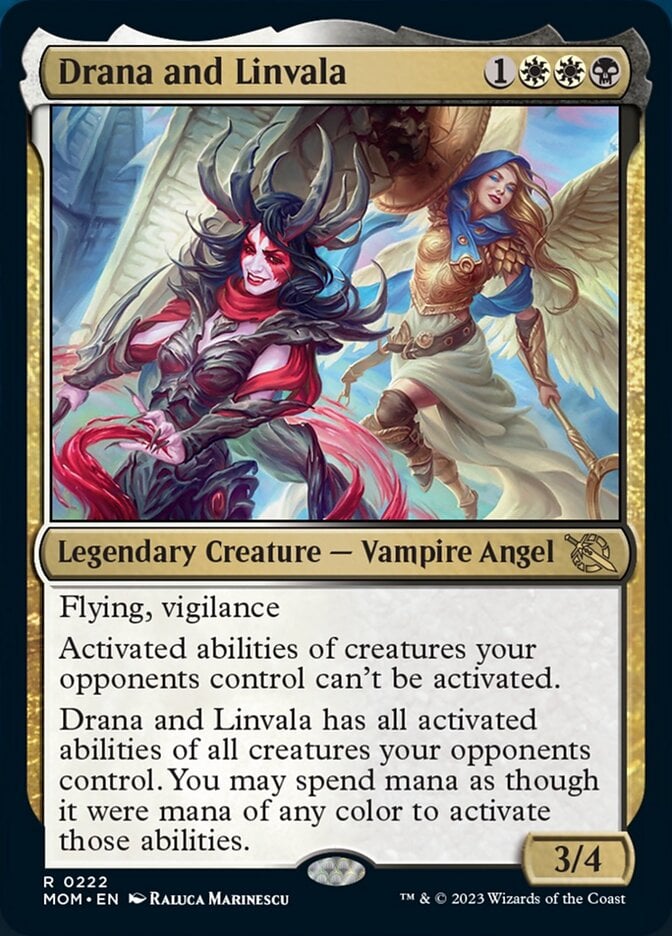
Drana and Linvala can also help shut down activated abilities while giving you access to some great ones. When I play-tested this deck, I was able to use an opponent’s Heartless Hidetsugu to great effect.
The Mana Base
Since this deck runs a good number of cards that search for them, I wanted to make sure it had a decent share of basic lands.
Other than that, you also have Indatha Triome, Canopy Vista, Temple Garden, and a few other multicolored lands that have the Forest type. This works well with cards like Nature's Lore, and they can also be played from the graveyard with Titania, Nature's Force. You also have a few fetch lands which aren’t just great for fixing, but also landfall abilities.
Apart from fetch lands like Verdant Catacombs and Windswept Heath, you also have Myriad Landscape. I usually find this land too slow to play, but it works really well when you’re able to play lands from your graveyard. By repeating its effect several times, you can get a lot of landfall triggers.
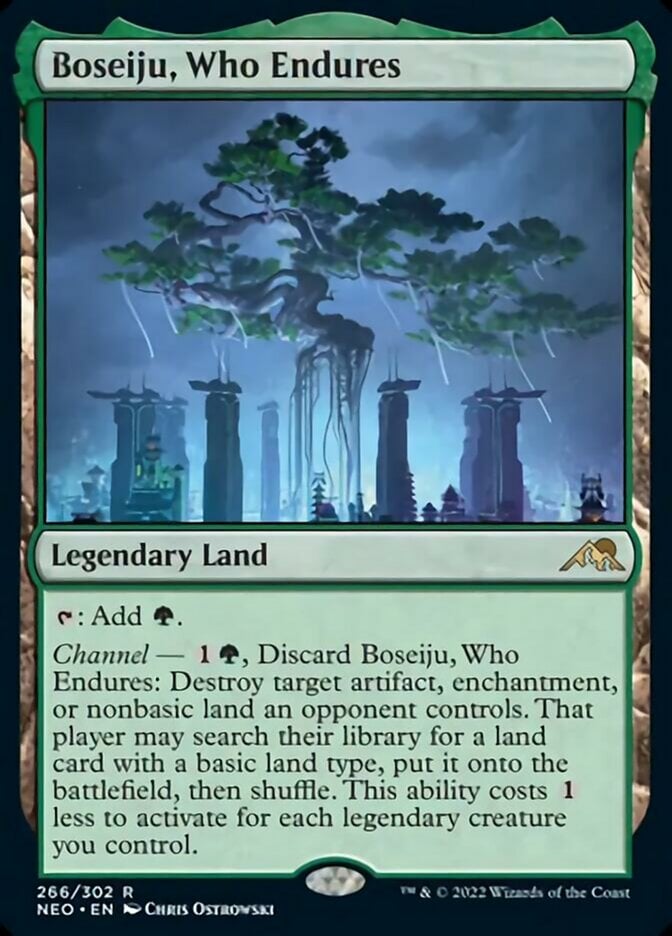
Boseiju, Who Endures is another great game piece to have in a deck with land recursion because you can use its removal effect before then playing it from the graveyard.

Similarly, Strip Mine can be a pretty nasty bit of land removal if you’re able to keep playing it repeatedly.
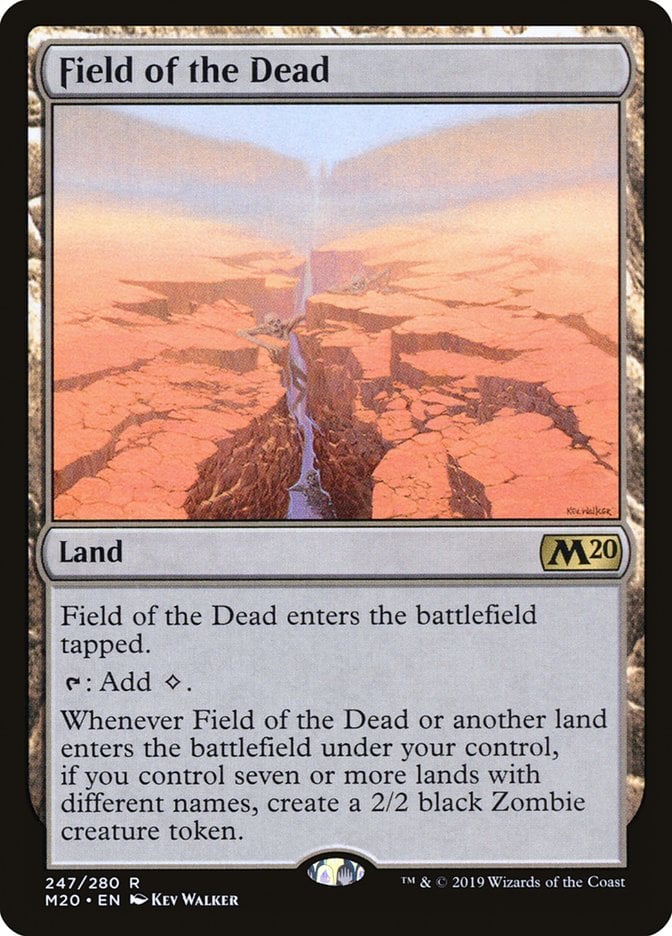
Since you’re running a decent number of lands with different names, Field of the Dead can be a powerful card. It can help you make lots of zombies in a deck like this built around landfall.

While Dark Depths isn’t going to make you any mana, it can provide you with a massive creature token. Even if your opponents remove Marit Lage, you can get more than one chance to use it since you’ll likely be able to grab this land out of your graveyard at some point.

Ashaya, Soul of the Wild can also turn your creatures into forests, which gives you another source of mana production outside of just your land base.
The Strategy
When playing this deck, I started to realize that Thalia and The Gitrog Monster isn’t so much the cornerstone as much as a very helpful tool. While your commander is nice to have out, you don’t need to worry too much when it’s not on the field. What you want to make sure of is that you’re getting some of your token-generating landfall abilities somewhat early on. You have a lot to choose from in this deck, so it’s not unexpected to see one in your opening hand. If you don’t, or it’s too expensive, you can also look for card draw like Sylvan Library or ramp spells that thin out your deck like Cultivate as good early plays.
Once you have some good landfall abilities on the field, you want to make the most of them. Using your commander or cards with similar effects, you can drop multiple lands per turn and generate more value. Paying attention to sequencing can also be important in this deck. If you draw into a landfall creature that you can afford without playing a land first, make sure to do that and then play your land for turn. I know I’ve been guilty of getting into the habit of just dropping my lands right away, which can sometimes deprive you of good triggers.
Don’t be afraid to sacrifice your lands to Thalia and The Gitrog Monster if you need card draw. With the number of ways there are to get more lands or recur the ones you sacrifice, it’s usually worth the trade. This is especially true if you also have cards like Titania, Protector of Argoth or The Gitrog Monster on the field because you’ll get additional benefits from sacrificing lands.
Make sure you’re not being overly precious with your token creatures. Swing often when you have lots of them, even if a good number die. You don’t really gain anything from building up a big token army if it’s swept before you get any value out of it.
Combos and Interactions
There are no infinite combos here, but there are some interactions you want to keep an eye on in this deck.
One of the big ones is the interaction between Thespian's Stage and Dark Depths. By copying Dark Depths, you get a copy with no counters on it. You can immediately bring out Marit Lage without sinking a ton of mana into the land. You lose both lands in the process to the legend rule, but it’s worth it for a 20/20 indestructible flier.
Not necessarily an interaction, but it’s important to keep in mind that your token doublers stack. Make sure you’re not shortchanging yourself when you have multiple out or if you’re activating Rhys the Redeemed with a Doubling Season on the field.
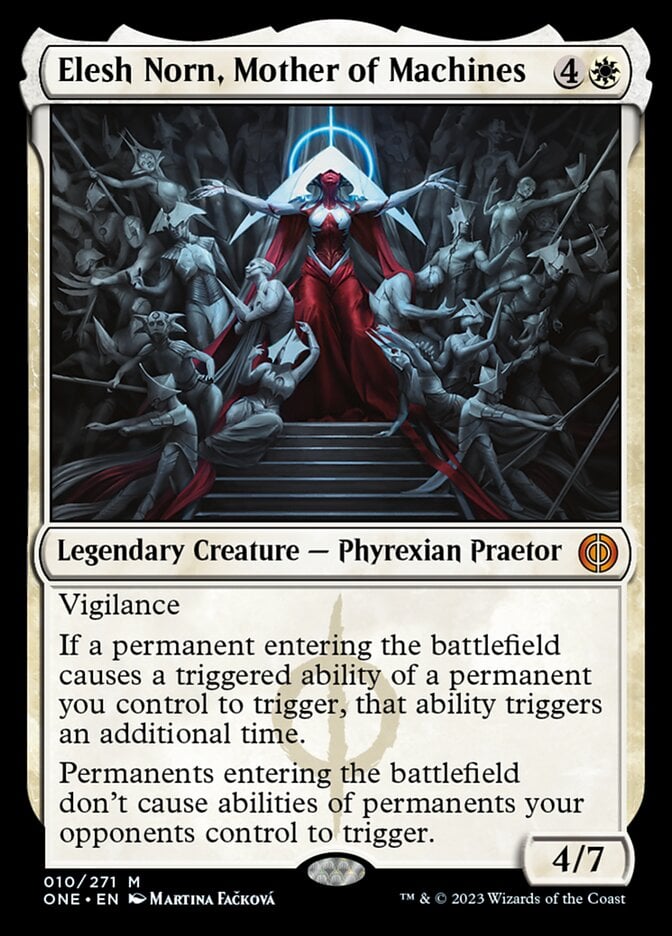
Lands are considered permanents, so make sure when Elesh Norn, Mother of Machines is on the field that you’re doubling up your landfall triggers and any ETB effects that may be on your creatures.
Rule 0 Interactions Check
It’s important to note before you start playing with this deck, you want to have a rule 0 talk about the inclusion of Armageddon. I included this card because it works well when you have both the ability to play extra lands and the ability to play lands from your graveyard. That ensures that you’ll be reestablishing your board state much more quickly than your opponents, and it can essentially be a win condition for this deck. That said, some players are against any form of mass land destruction, so you may want to bring a 101st card with you just in case you need to swap it out.
Budget Options
This is a pricey deck, and unfortunately some of the most expensive cards in it are your token doublers. It’s nice to have a lot of them in your deck, but you can lose one or two to cut down on price. Replacing them with cards like Idyllic Tutor that are cheaper and let you find one of the remaining doublers could be a good solution. You can also include a Worldly Tutor instead of a card like Doubling Season and use Mondrak, Glory Dominus as your token doubler since it’s also the cheapest one.
I included Urza's Saga because I enjoy using it to make constructs repeatedly when I can play lands from the graveyard. That said, the constructs aren’t all that strong in a deck that runs almost no artifacts, so you can replace this with just another basic land to save yourself $30.
Though prices may change, Wrenn and Realmbreaker is currently priced at about $44. Since you’re likely not going to get too many -2 activations out of this card before it goes away and since it’s hard to ult, you can easily take it out to save some money.
Other Builds
When building this deck, I leaned much more heavily towards The Gitrog Monster’s side of things, focusing largely on the land abilities. If you want more emphasis on what Thalia brings to the table, you can instead build this deck around hatebears.
Hatebears are creatures like Thalia, Heretic Cathar or Thalia, Guardian of Thraben which are cheap and have some sort of tax or Stax effect on your opponent. Other popular hatebears include Drannith Magistrate, Aven Mindcensor, or Hushbringer. This type of deck might be even more contentious than my inclusion of Armageddon in my current build, so make sure you have a rule 0 talk with your table before playing it.
Commanding Conclusion
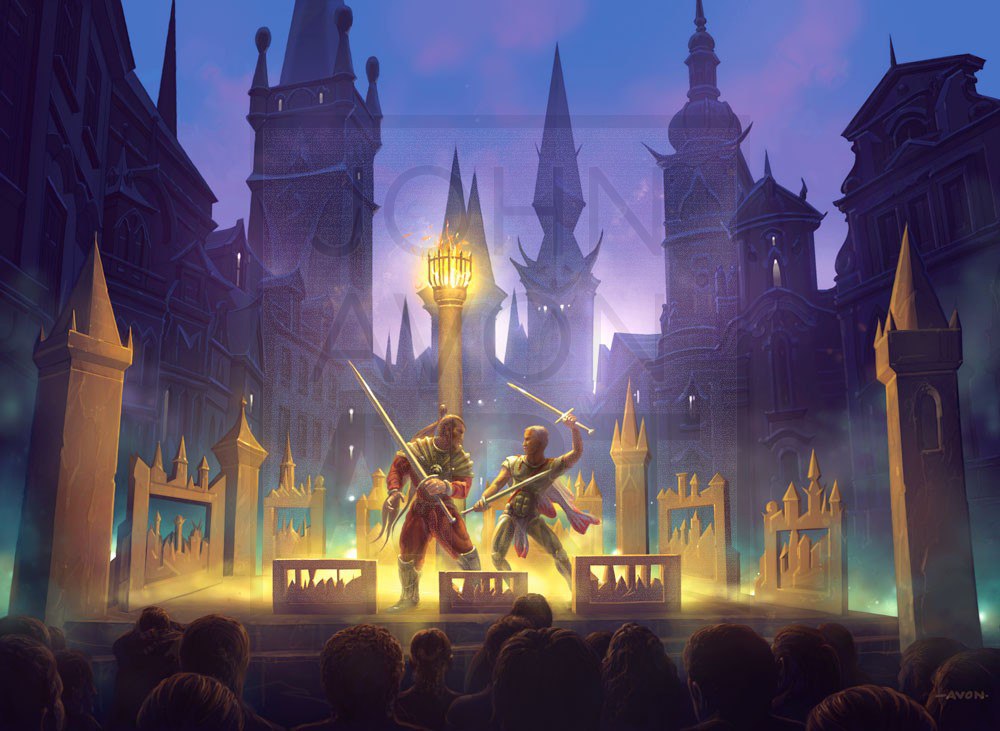
Thespian's Stage | Illustration by John Avon
Thalia and The Gitrog Monster make for an interesting combination. While I think I mainly just built a fun Gitrog Monster deck that made use of the addition of white mana, I think there are a lot of other ways to build this. I’m excited to see all the ways players mess around with this commander and come up with builds similar to or completely different from my own.
Which is your favorite March of the Machine team-up? How would you build this combined commander? Let me know in the comments or on Draftsim’s Twitter.
Thanks for reading, and I look forward to seeing you in the future!
Follow Draftsim for awesome articles and set updates:
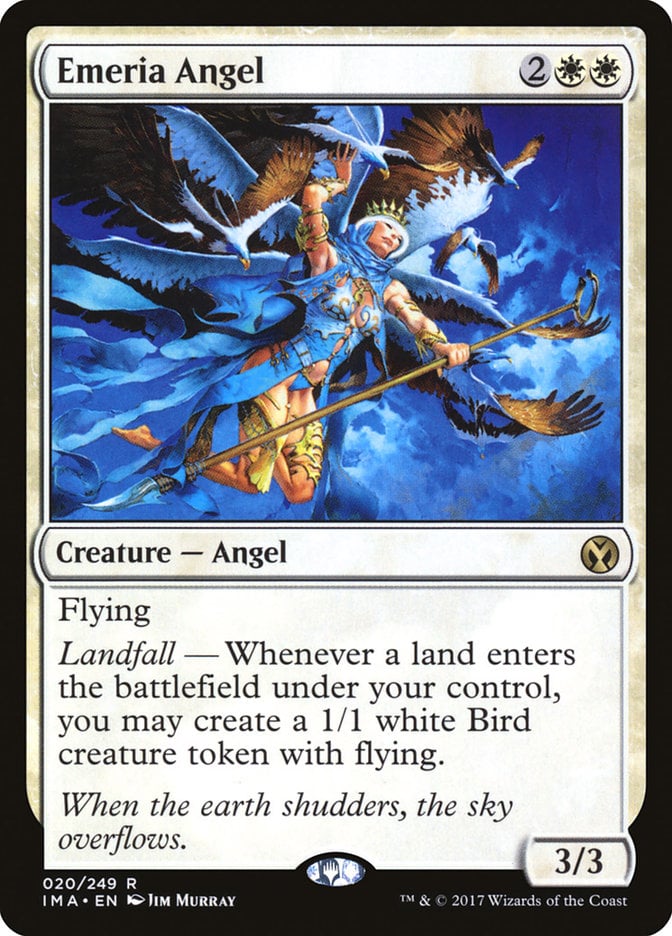
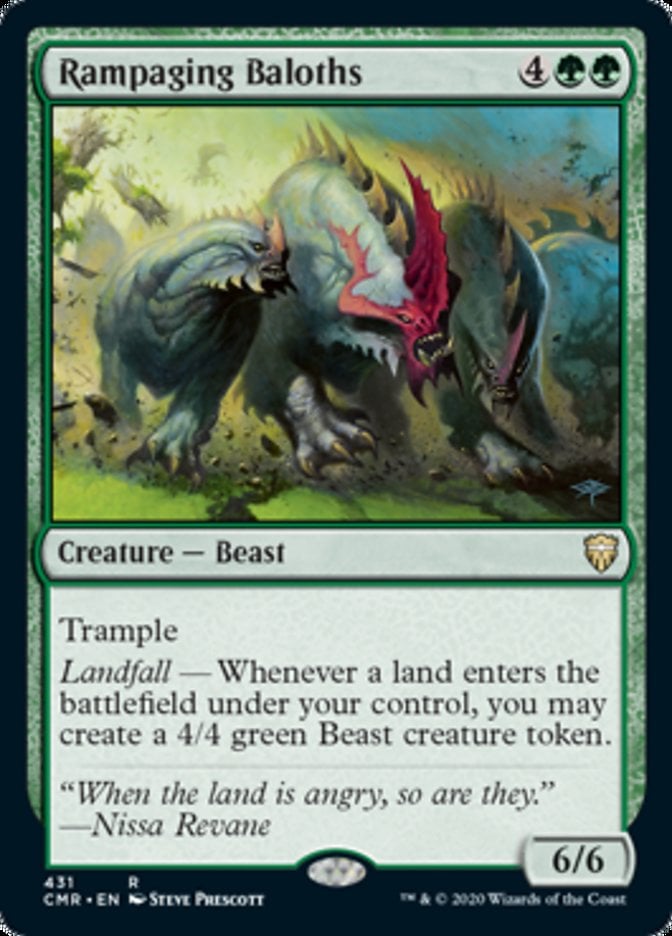
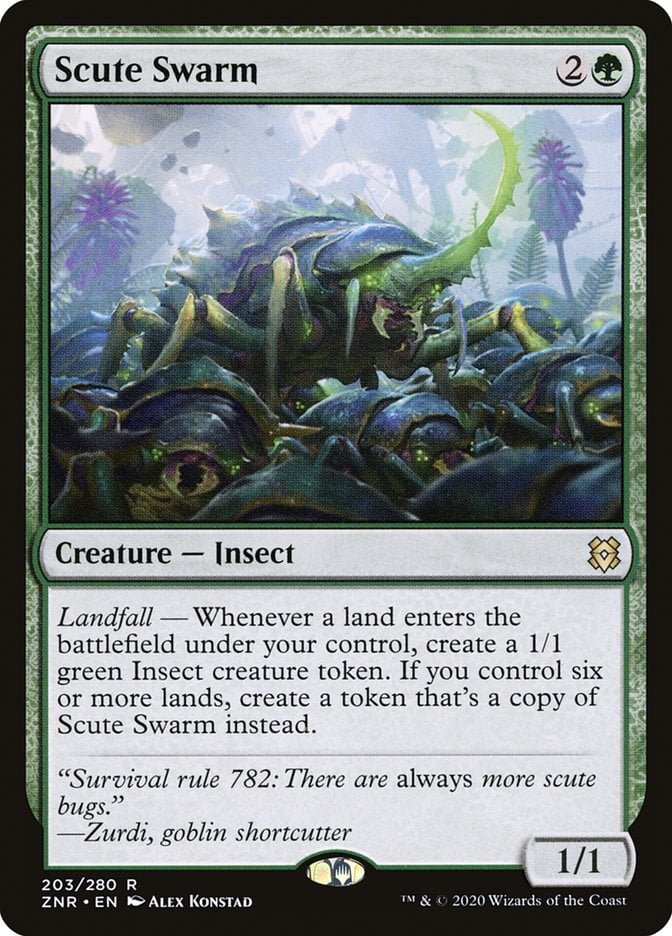
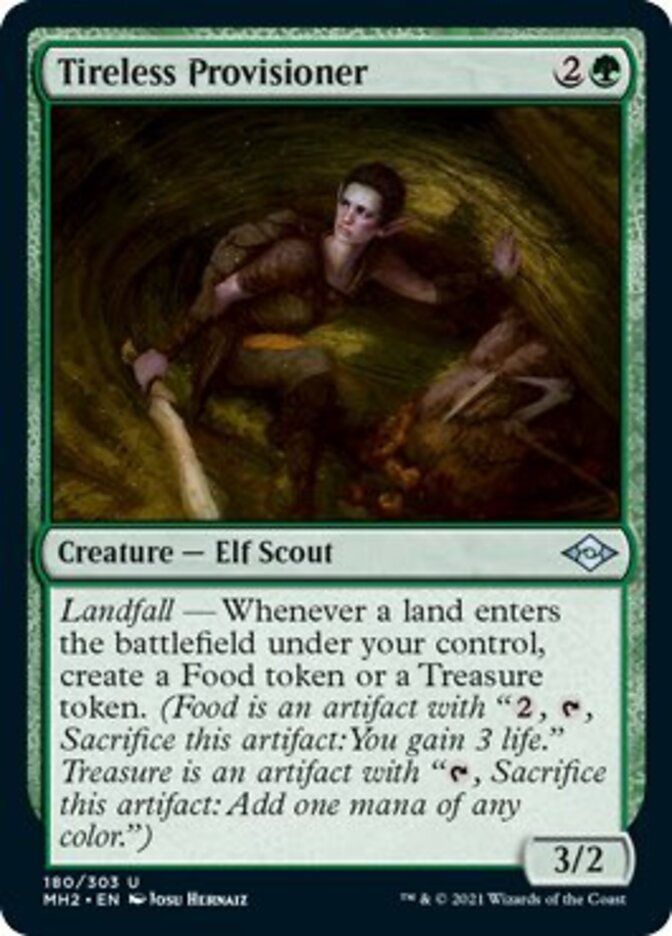
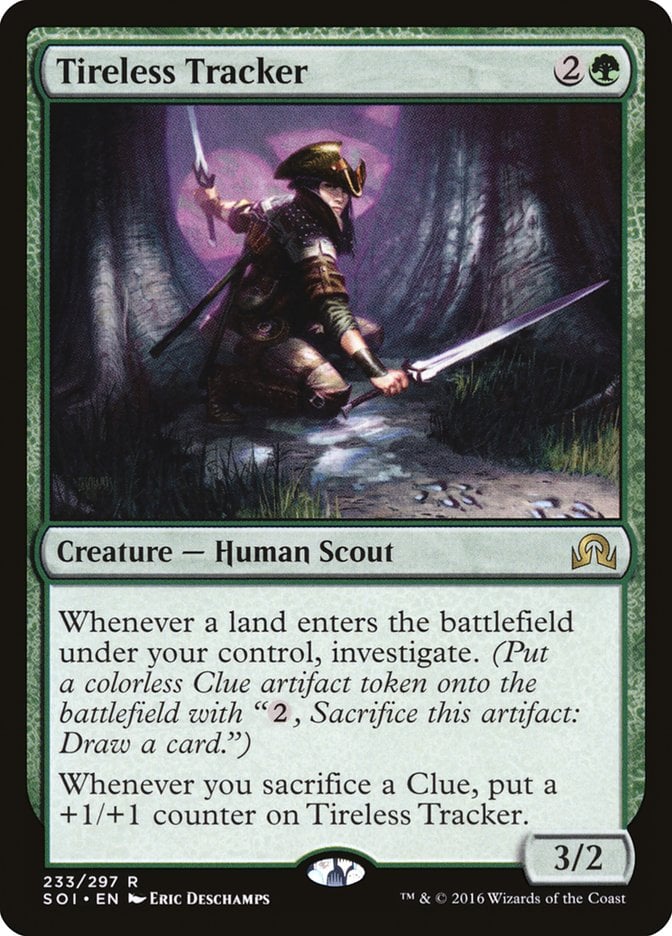
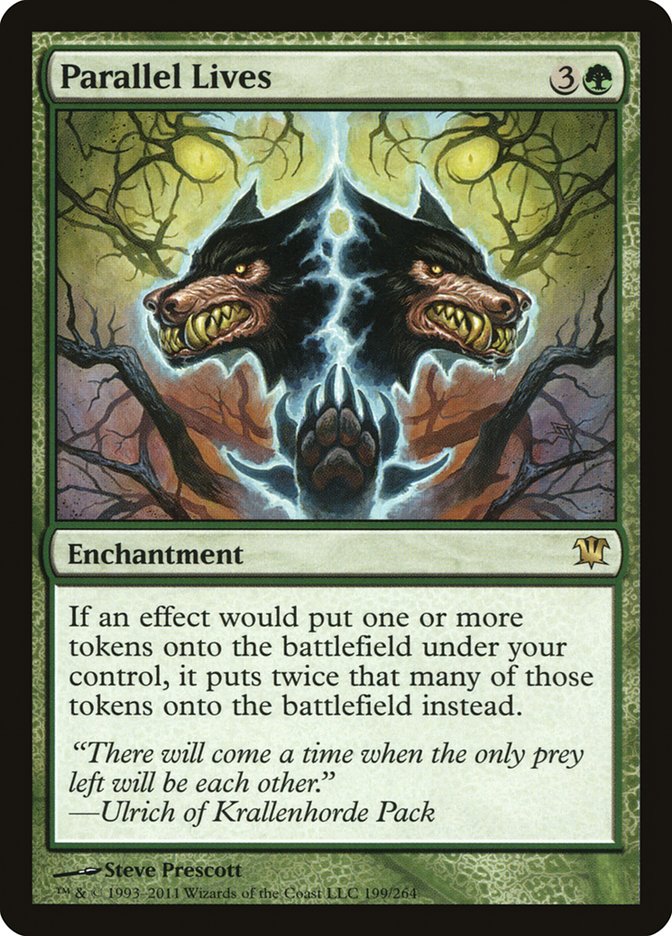
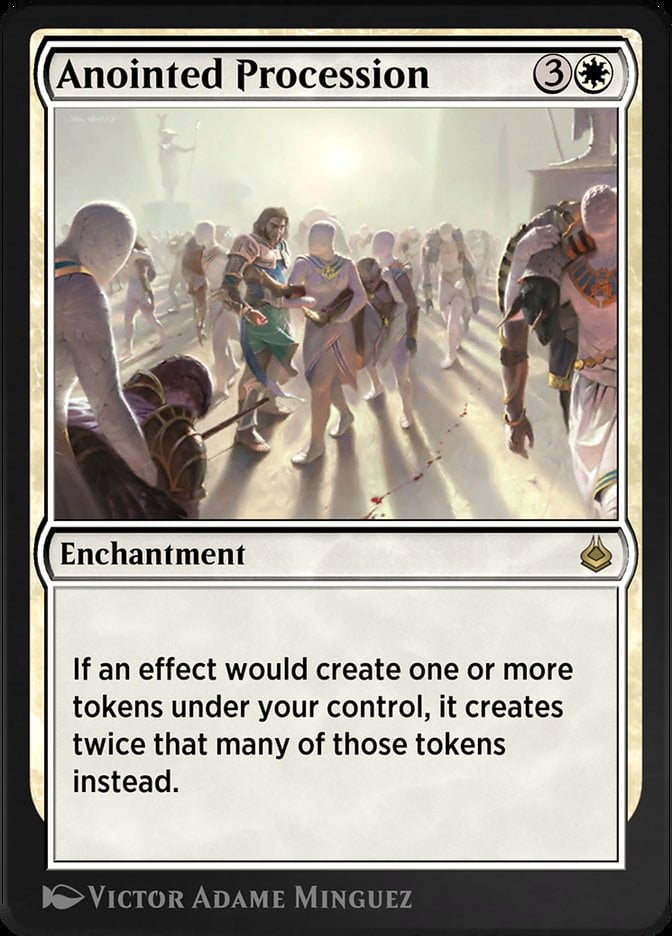

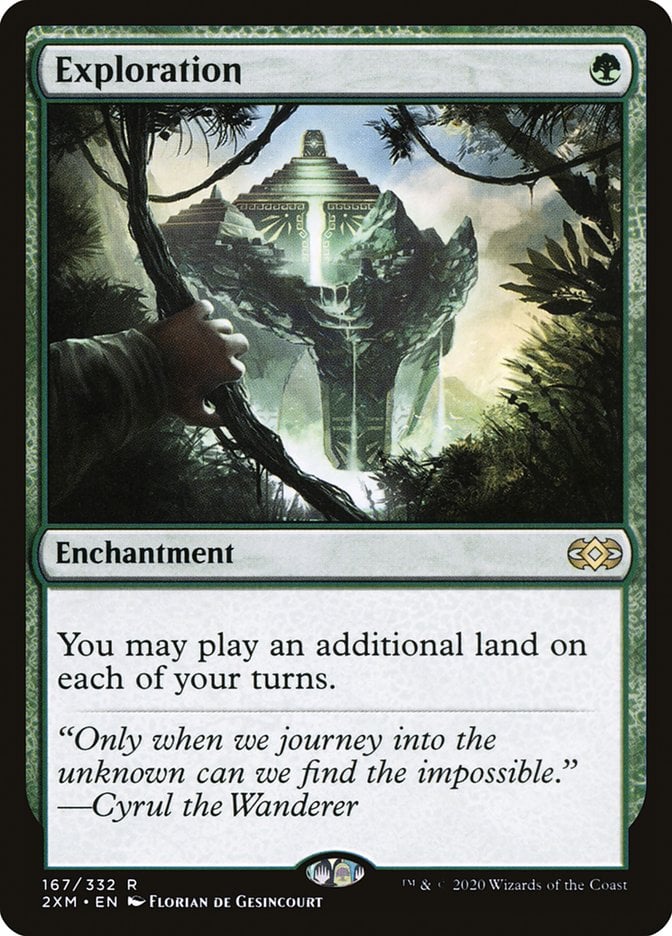
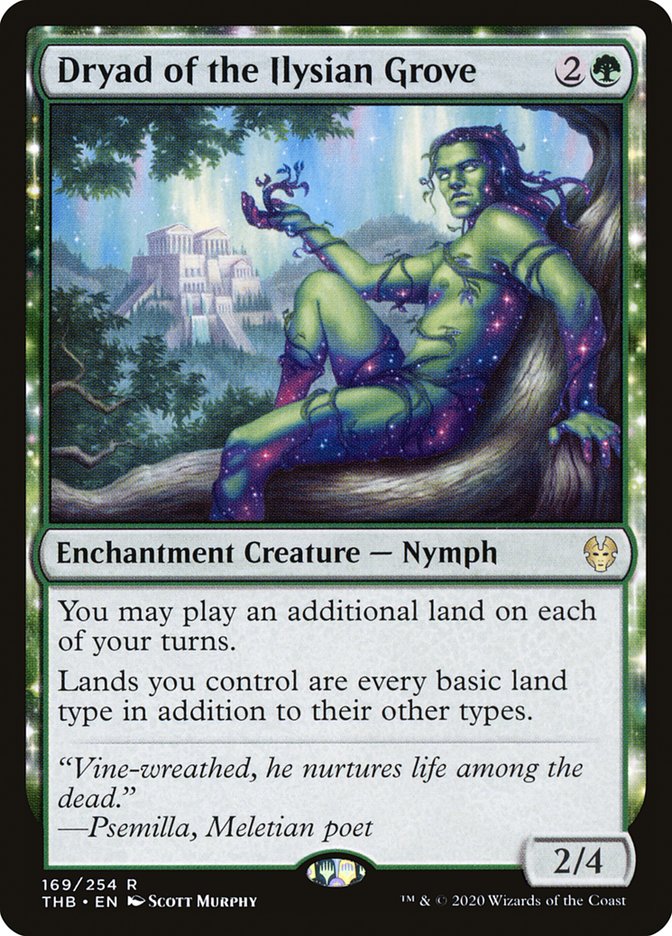


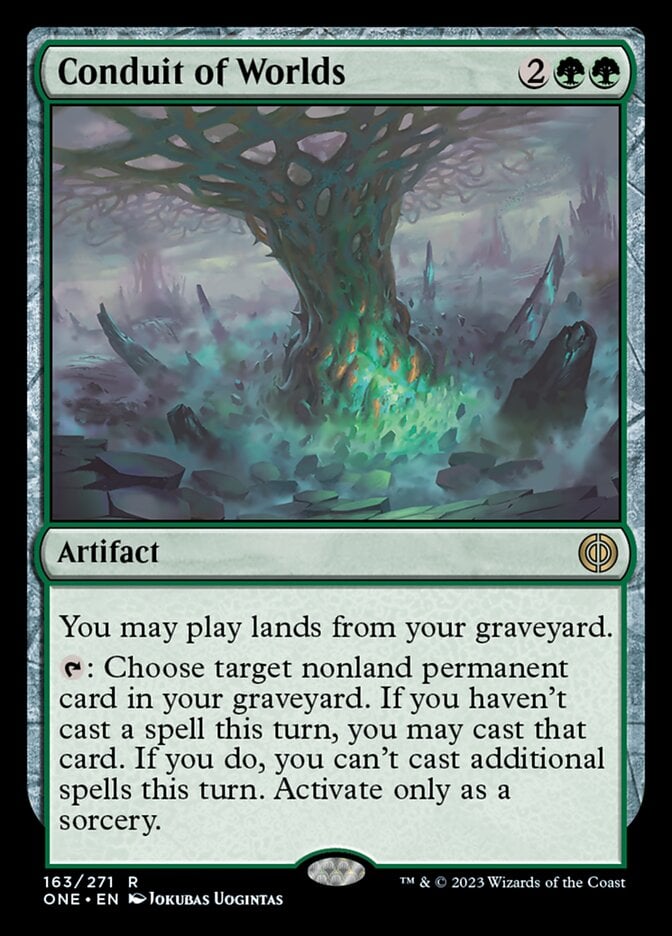
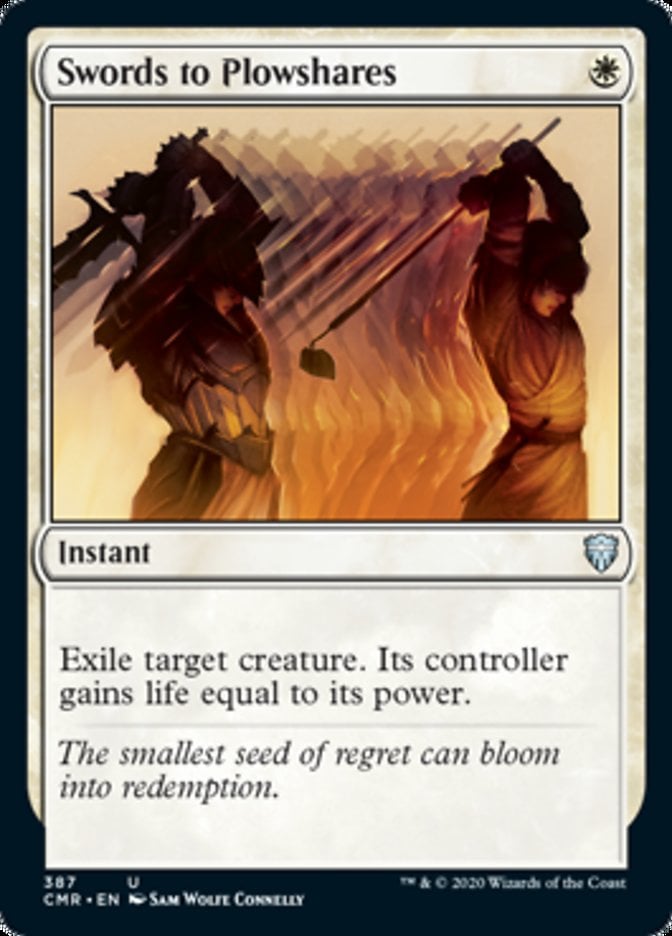
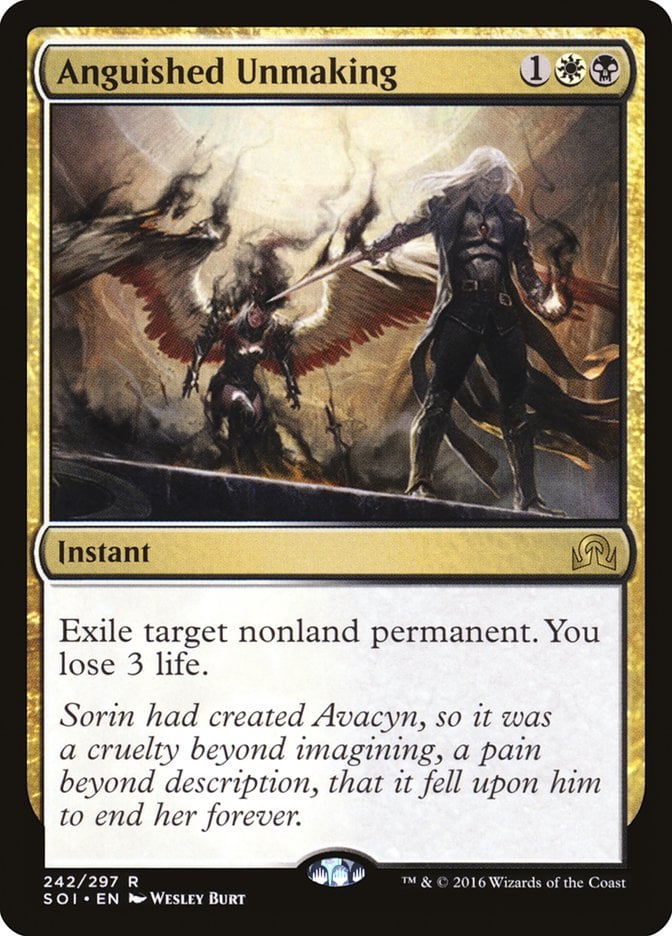

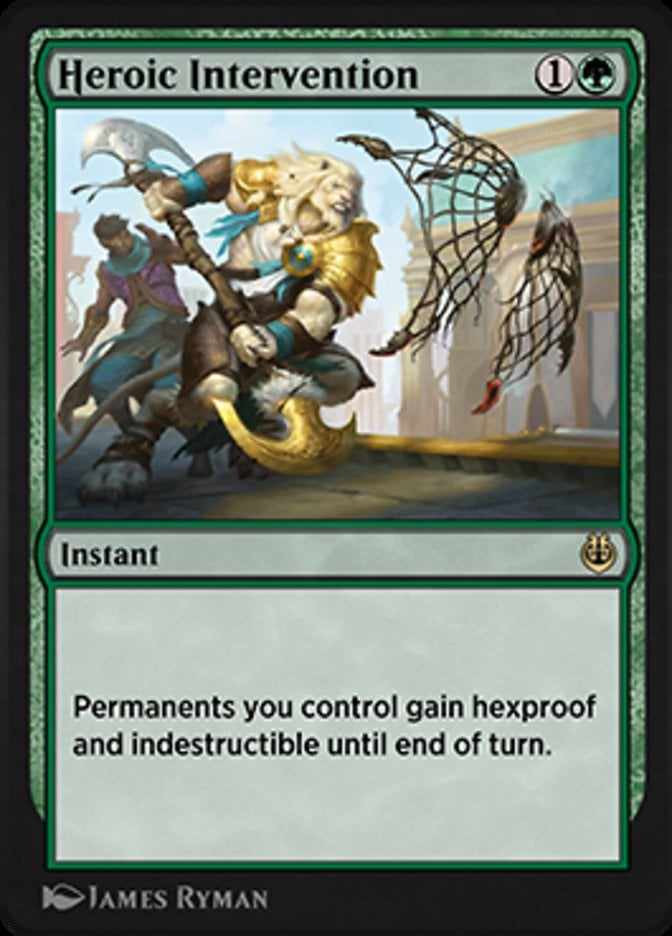
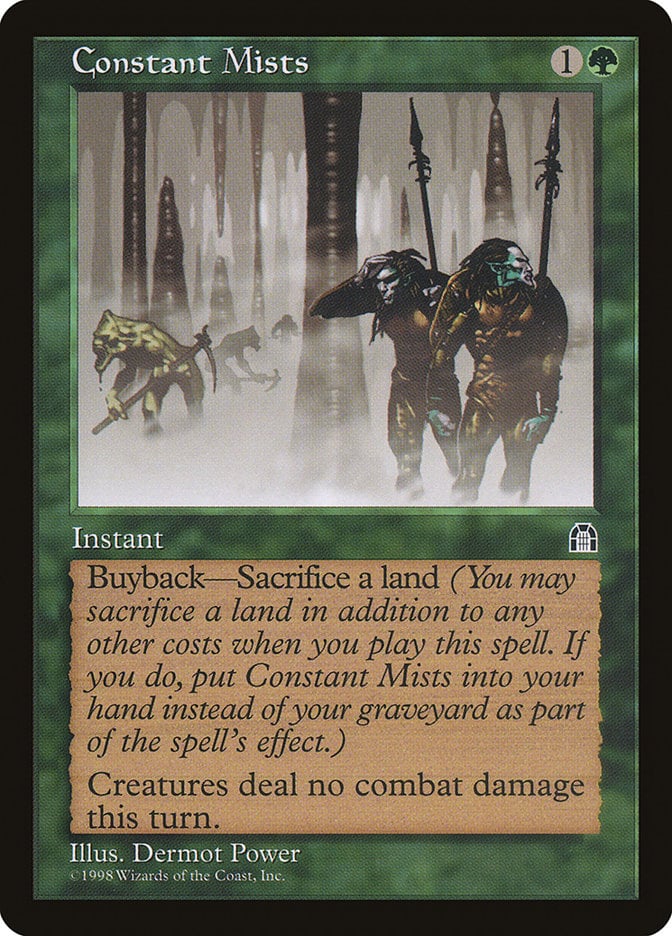
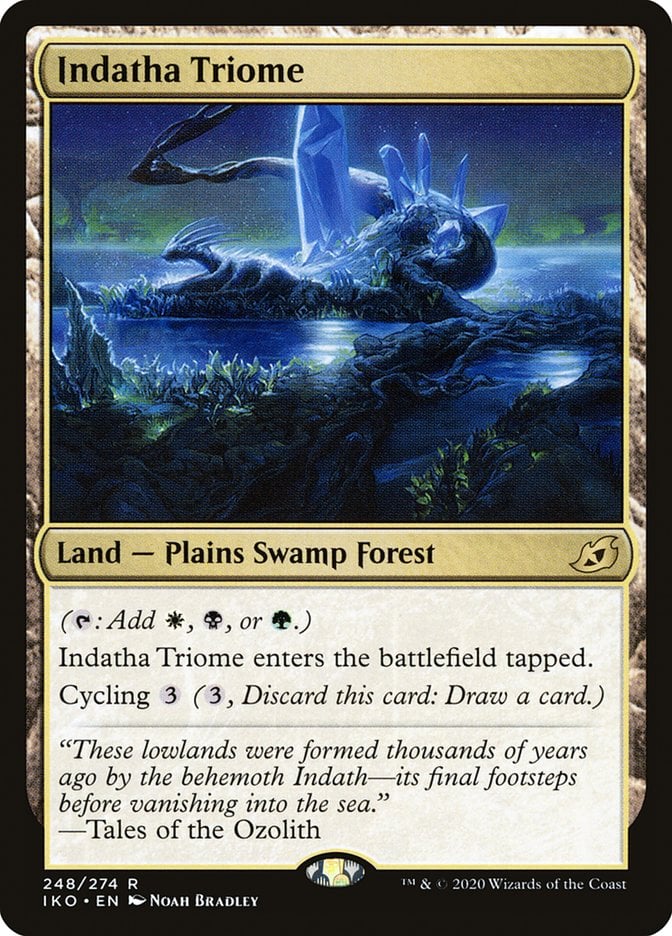
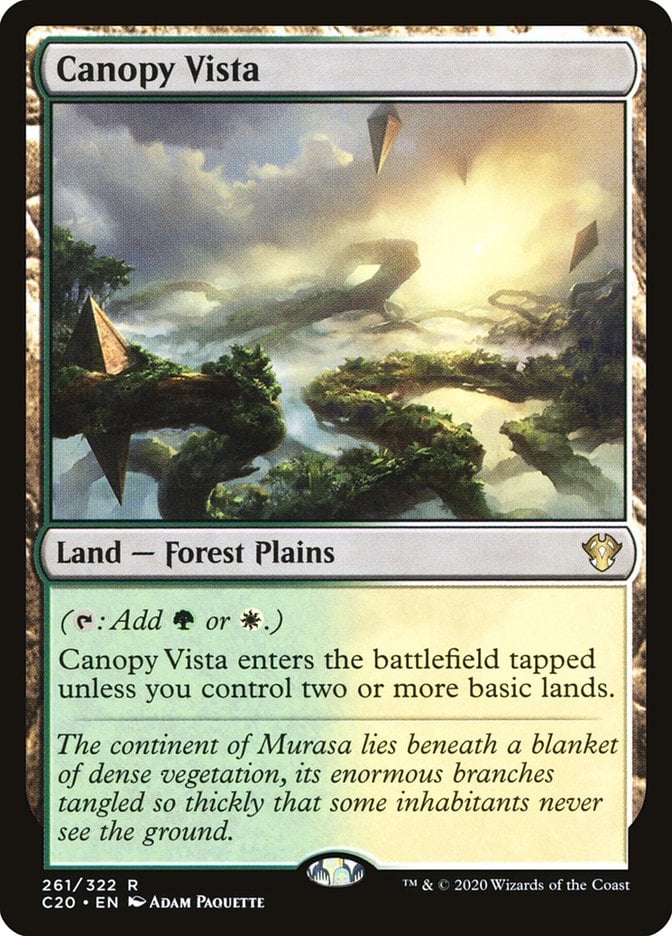
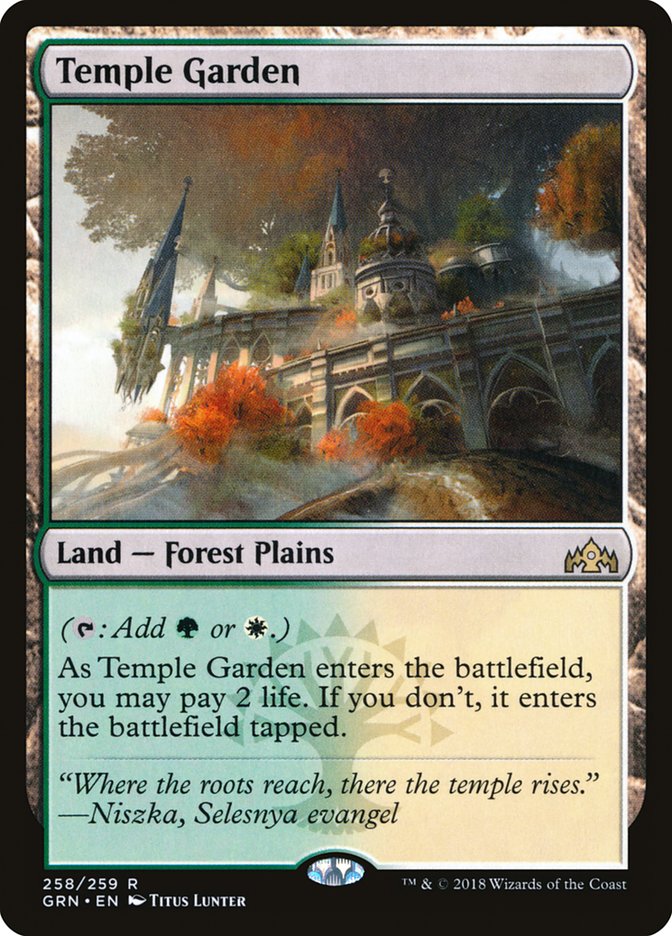
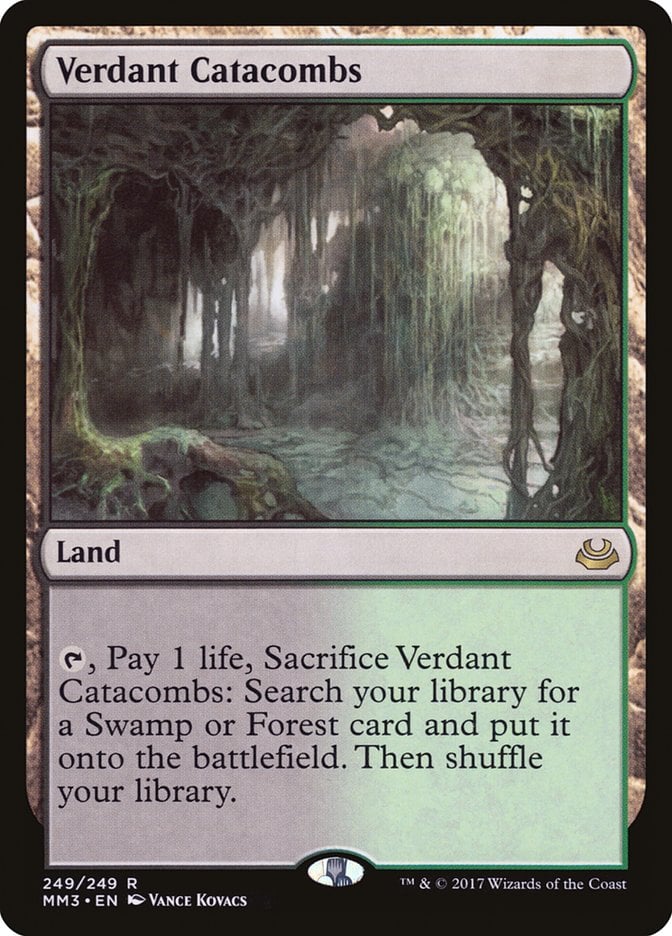
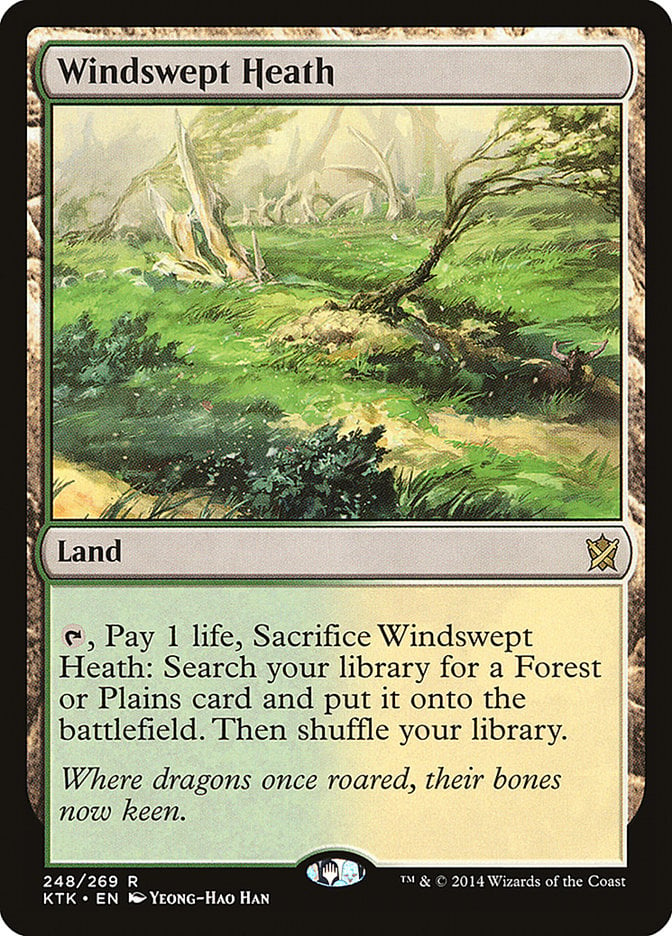
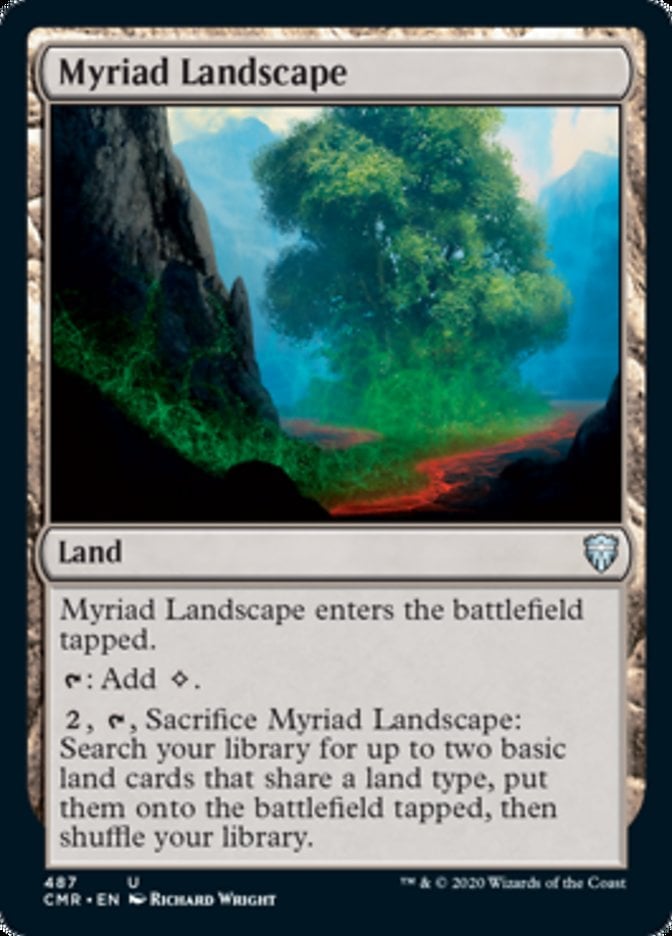
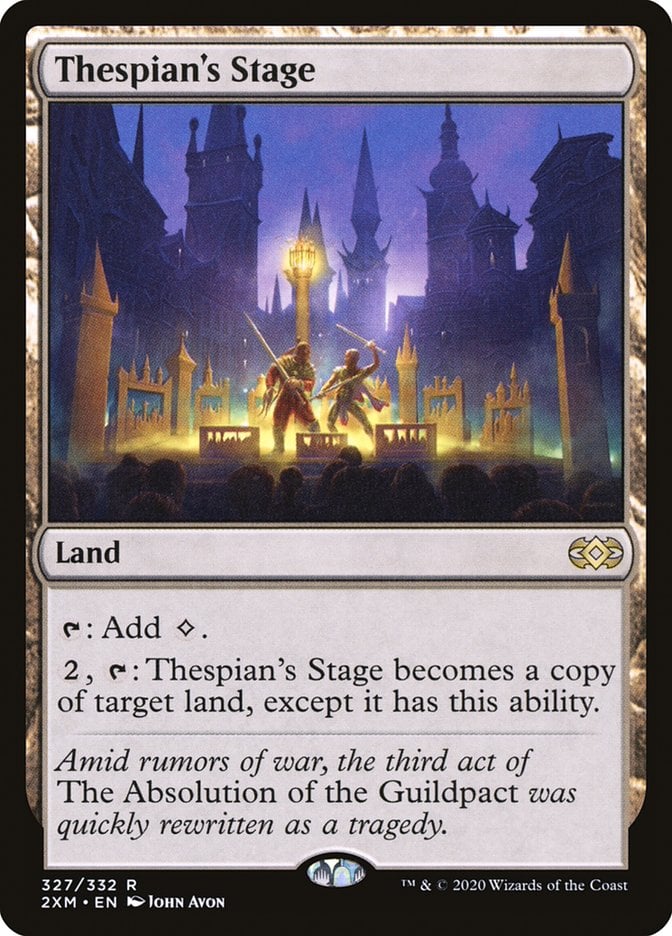
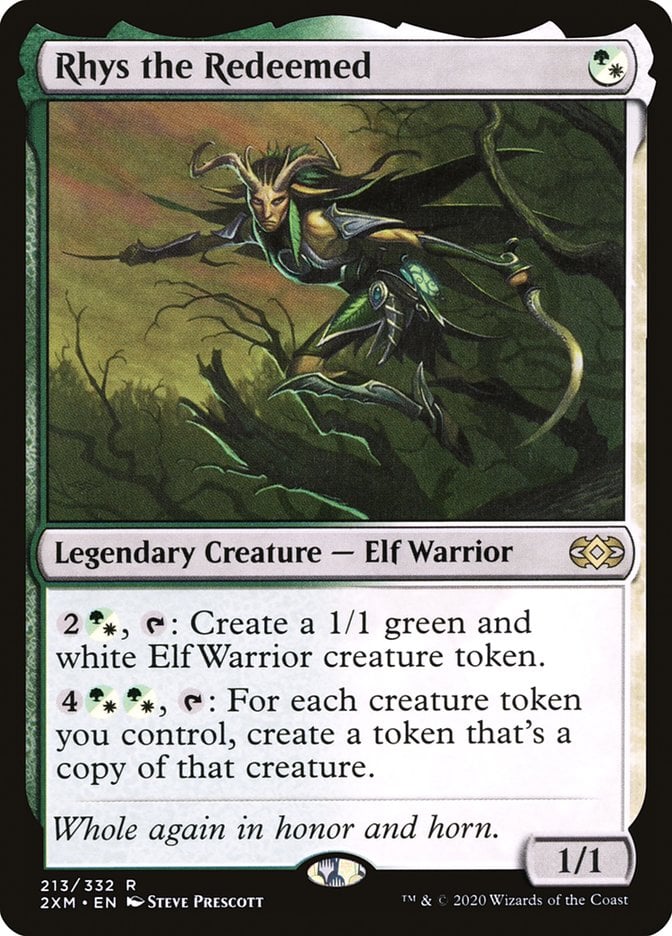
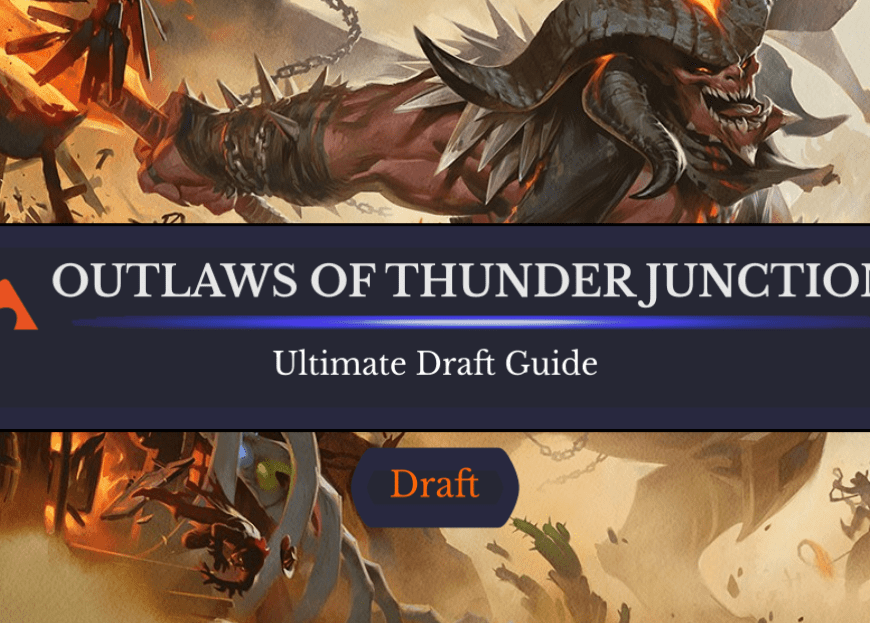
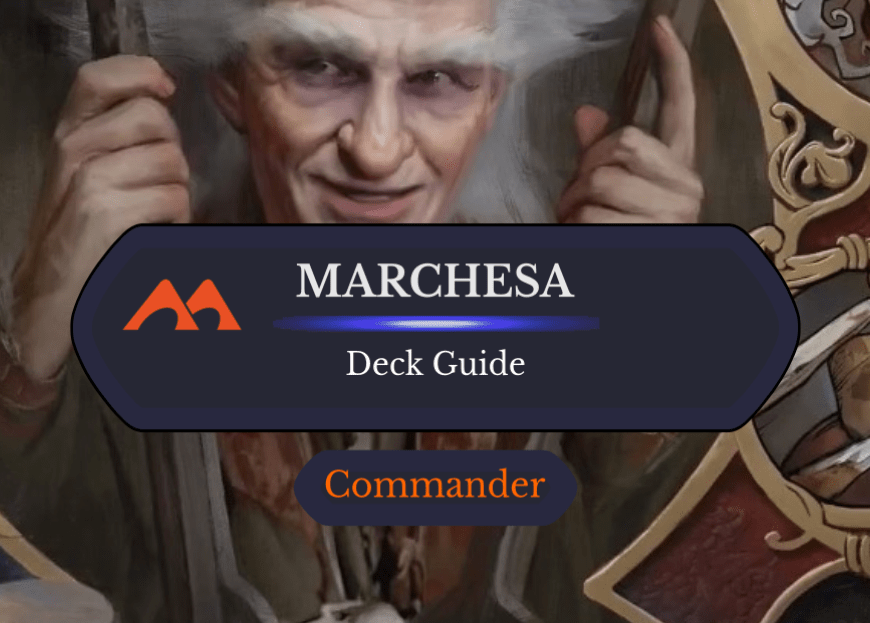
Add Comment